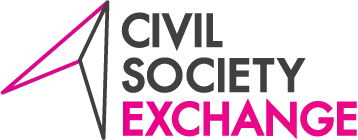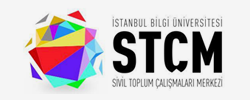For most of us, things tend to slow down during summer: there are fewer events, people go on vacation, cities get empty, and beaches fill up. This was not the case for activists from 8 civil society organizations from Europe and Turkey, who started their journey in the Civil Society Exchange Partnership Program (CSEPP) 2020–2022 this summer (read more about the program here). Due to the worldwide Covid-19 pandemic, this time participants met each other online and, during 6 online sessions, made the very first steps of co-designing their own tailor-made mobility program for local civil society organizations in their network.
What did we do?
This first phase of CSEPP was both a challenge and an exciting opportunity for participants and the project team. What was supposed to happen offline in a physical meeting in Turkey, was now transferred and re-designed to take place online using tools of virtual mobility. A three-day gathering turned into a three-week online training. Twice a week, participants met with each other, the project team, mentors and trainers, and design thinking experts for participatory learning sessions. During these sessions, participants learned about the overall structure and timeline of the CSE program and the “capacity through mobility” model. They discussed how international mobility and cooperation can facilitate formal and non-formal learning practices. In the second week, participants had an opportunity to co-design specific aspects of their mobility programs, such as target groups, program timeline, and learning objectives. Two design thinking facilitators, Mana Taheri and Karen von Schmieden, facilitated these sessions and invited participants to take up very practical steps and start prototyping their own mobility programs. The last week was dedicated to giving feedback, sharing impressions, and discussing the next steps.
What did we learn?
For many of the participants, these sessions were not only the kick-start of their journey at the CSEPP, but also the first experience of taking part in a hybrid program that consists of both online and offline elements. Miriam Svanidze from Rural Communities Development Agency (RCDA) in Georgia was happy that “people are really able to share their experiences virtually and even conduct a program.” Everyone had expectations that did not differ from an offline setting, however, they were met even in this online setting. It was designed to be participatory and served as a great learning space for a prototyping exercise. “This program was as participatory as possible and very soon, I felt like I was in a safe environment and started to feel like a community with everybody including the facilitators,” told Özge Sönmez Vadar from Yuva. Participants learned or improved their previous skills of using online tools to brainstorm, prototype, co-design, and present their ideas and the partnership model: “I especially loved the collaborative approach on the digital tools, and creations that we have prepared. I even took a note to use these tools in our future programs as well,” said Gürkan Özturan from Media Research Association (MEDAR). Each partnership pitched their mobility program ideas to other participants, who gave valuable feedback and suggestions for further improvements.

An example of prototyping exercise
The key to success
Designing and facilitating an online version of the physical meeting was a great learning process itself. The team members had to make sure that time spent online was a time spent well, taking into account Zoom fatigue and other challenges related to the increased screen time during the lockdown period. “One of the feedback we received from many of the participants was about the length of each session. As we didn’t have any possibility to reduce the hours – we tried to overcome this by improving engagement and participation,” said Selim Özadar, Civil Society Exchange Project Manager at MitOst. Even though some participants were concerned about this new format for online meetings, most of these concerns were gone after the first session: “At first, I was really skeptical about virtual sessions. But after the second one, things changed: I felt like meeting friends and was looking forward to the sessions every time,” Miriam said. As the virtual meeting experience was a new adventure for both participants and the team, solidarity among the group and feedback sessions were the key to success, Selim said: “I think gathering feedback and listening to the participants after each session helped to improve their online experience,” he acknowledged. Therefore, all six online sessions were tailor-made, and the co-creation process happened not only within the partnerships working on their own mobility programs but also among the team members.
The journey continues
Now that they’ve completed all six online sessions, the participants will continue to work on their partnership. Even though the pandemic does not seem to be going away any time soon, participants are now well equipped and ready to design and start implementing their own international mobility program with virtual mobility elements. Gürkan feels ready to continue his partnership, and sees the digital transition as something inspiring: “it is really exciting to think that we are developing some new format that will benefit not only the people in our immediate environment but also in other countries.”. All in all, the first phase of the CSEPP was a great start for everyone. The feeling shared by all participants at the end of the last online session is well captured by Özge: “As human beings, we are a highly resilient species. Together, we experienced that a virtual exchange partnership program is possible.” Now, all partnerships enter the second phase of the CSEPP. In the upcoming months, they will experience first-hand how to manage and host an international mobility program by taking an active role in organizing the Civil Society Exchange Program 2020.

The timeline of the Civil Society Exchange Partnership Program






